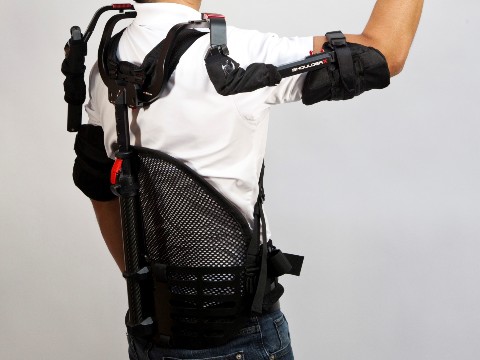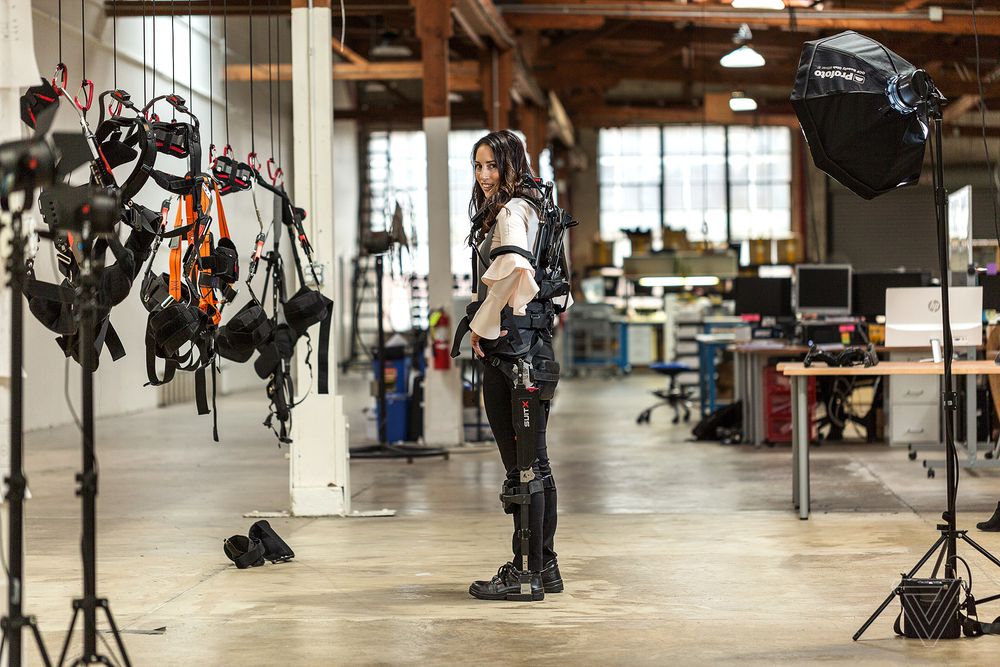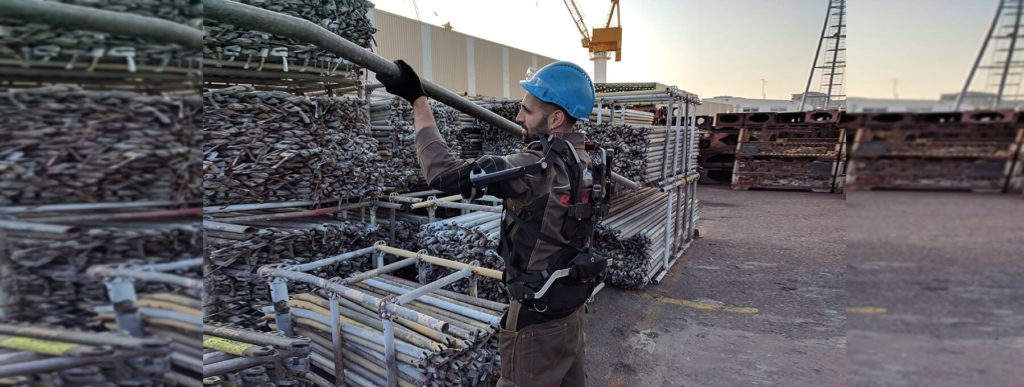Words: Nick Vaccaro
Photos: SuitX
There are various reasons why the trades are a specialized field in their rite and not sought after by many. The inclement weather and environmental challenges are not for the weak of heart. For masonry workers, bending, stooping, and climbing while handling considerable weight is just another day at the office. Still, SuitX has developed an exoskeleton technology that can revolutionize the masonry trade. Lending support in all critical areas, it can be speculated that SuitX may very well be capable of prolonging the careers of many masonry masters who finish early with stiff backs and blown-out knees.
Critical Support
SuitX’s technology pinpoints three significant areas of the human body. The V3 ShoulderX model offers enhanced arm support for the workforce. Weighing in at 7.1 lbs., the device securely fastens to the user and accounts for breathability. With its adjustable torque and angle functionality, the V3 ShoulderX provides ease and support when lifting objects overhead.
SuitX further accommodates the worker with the V3 backX-S. Its primary purpose is to provide crucial support of the torso when the wearer is in the stooping position. Its weight of 7.25lbs gives additional ease to functionality and is explicitly designed not to hinder movement.
Finally, SuitX directs its attention to what carries the body with the V3 legX. Concentrating on the squatting position, the exoskeleton provides superior support and reduces the force to the knees. Although 13.7lbs, the device brings a game change feature to the table in aiding when rising from that strenuous squatting position.
Identifying the Need for the Masonry Workforce
No one understands the strains and pains of the masonry trade more than Walker-Smith IV. A third-generation mason now running the family business in Bogalusa, Louisiana, he has witnessed firsthand the toll taken on the human body.
“When you constantly bend and pick up stacks of bricks all day, it affects the body,” said Smith. “Add the prep work like shoveling sand and mixing mortar, and you feel it when you go home at the end of the day.”
Although just considering the act of constructing a brick wall, a mason operates in various hazardous positions. It initiates with stooping to begin laying the first course of brick. Depending on the length of the wall, the mason may remain in that position for an extended time. With transition being made to working at chest height, considerable weight is still handled at a critical angle. As the work progresses upward, the shoulders are compromised and can even affect the neck.
“If you start out squatting, you might be in that position for a while depending on the number of brick or block you are laying,” said Smith. “When you have to change position, it is a killer. You’re stiff and need to adjust. Then the process repeats itself as you get settled into the next position you work from.”
There is no doubt that the mason body experiences physical abuse coupled with wear and tear as the career grows in tenure. Back pain, disc issues, aggravated knee problems, and stiff necks are the popular aftereffects of a lifetime working in the masonry industry. The question is how effective could SuitX be in remedying or reducing these ailments, therefore, improving quality of life.

Testing the Theory
According to the article, “Evaluation of a Lower Leg Support Exoskeleton on Floor and Below Hip Height Panel Work,” a study was conducted where the defined objective was to determine the effects of using a spring assisted and total body weight supporting exoskeleton worn on the legs. The study consisted of 15 people, both men and women. The exoskeleton system utilized included adjustments enabling a correct fit. The activity exercised included drilling a hole at waist height and moving a rod between three markers on the floor. These are both common body positions experienced by those working in the masonry profession. Depending on the position, results indicated a reduction in medium muscle activity ranging from 22 percent to 56 percent. The study concluded that joint loading is reduced by reducing strain on the knees and can decrease knee disorders experienced in the future.
An additional study was referenced in the article, “Evaluation of a Trunk Supporting Exoskeleton for Reducing Muscle Fatigue.” Here, researchers focused on muscle fatigue and oxygen consumption. Endurance time was to be captured concerning experiencing the fatigue. Twelve males donned the exoskeleton and participated in a repetitive lifting session. Not only was it determined that the participants could sustain a back-straining posture for a period increased by 52%, but lower back muscle use was significantly reduced.
13 right-handed male participants and approximately 37 years of age were evaluated in a study referenced in the article, “Evaluation of an Adjustable Support Shoulder Exoskeleton on Static and Dynamic Overhead Tasks.” The simulated work procedure included tracing a series of lines on a ceiling with the non-dominant arm and the dominant arm, then following the lines with a drill. The analysis concluded that the exoskeleton drastically reduced flexor muscle activity within the shoulders. Further speculation was provided where an increase in worker productivity was expected.
Marketing to the Masonry World
Reviewing the studies and their published results, an argument in favor of the exoskeleton system used in the masonry field can quickly be dispatched and supported. Each of the positions replicated is directly used in varying stages of masonry work.
The difference between the study segments and actual real-world use is the time selected. While each study was conducted for a specified period, those same simulated experiences account for a working lifetime for masonry workers. Considering the results indicated in all three studies, one can hypothesize the favorable results by reducing the same hazards but over years of repetitive bodily abuse.

“There is no doubt that exoskeletons can affect my industry in a positive way,” said Smith. “I remember the aches and pains of my dad and grandpa as they got older, and I know I’m on my way at 42 with disc issues. An exoskeleton could be a life-changer.”
Depending on work scope and company size, exoskeleton justification could face challenges from a fiscal perspective. With a price tag ranging from $5000 to $6500 for SuitX’s systems, company cost counters may not have the budgetary means for such technology. Necessity and desire can be quantified on a grander scale when consideration is given to the entire business model scenario.
“I don’t mind spending money on a good tool,” said Smith. “The issue becomes if you’re company’s revenue will allow for it. I can see the good that would come from putting each of my people in an exoskeleton, especially for the work we do, but that doesn’t mean I can afford to do it.”
While exoskeleton cost might be a hard sell, it may be the missing piece to your daily puzzles when it comes to productivity and efficiency. As a tool, exoskeletons can earn their cost back and become an asset by potentially eliminating costly medical bills and the always possible disabling event. Bottom line? Check out SuitX’s site for more information and see if it can benefit from including in your equipment lineup.
